Giacomo Bacci
Transformer-Based Power Optimization for Max-Min Fairness in Cell-Free Massive MIMO
Mar 05, 2025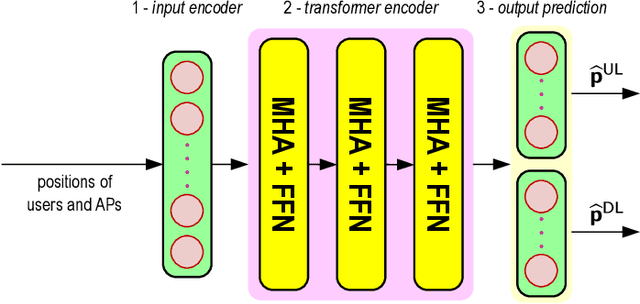
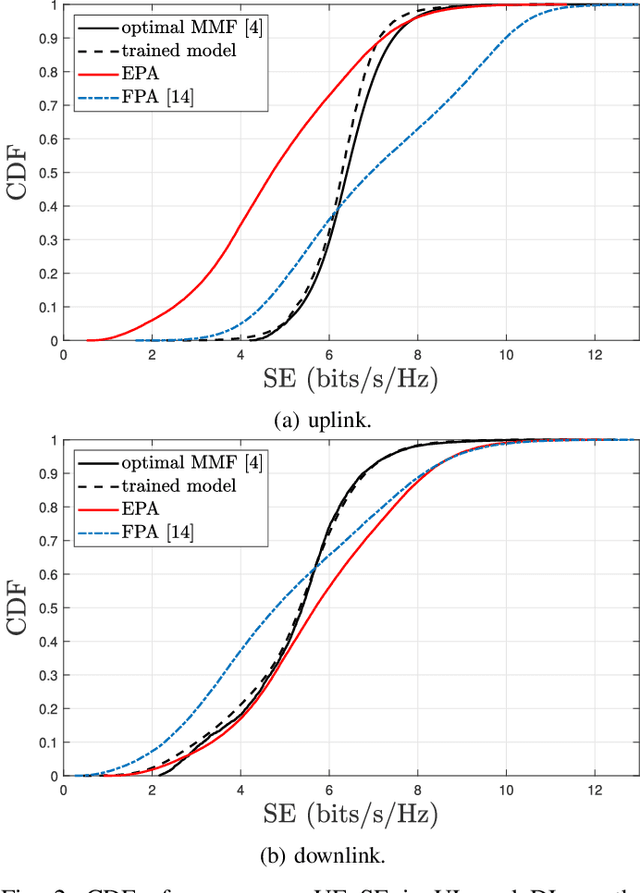
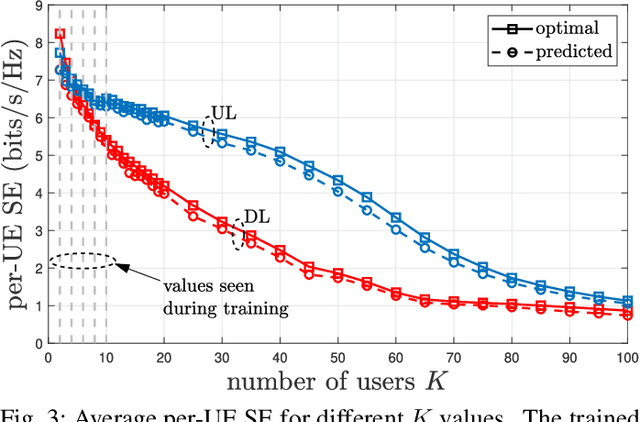
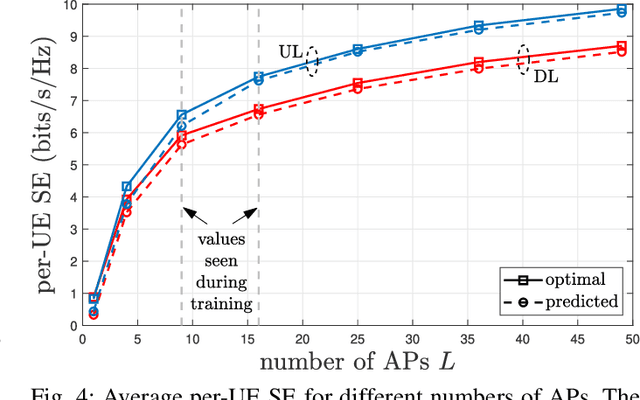
Abstract:Power allocation is an important task in wireless communication networks. Classical optimization algorithms and deep learning methods, while effective in small and static scenarios, become either computationally demanding or unsuitable for large and dynamic networks with varying user loads. This letter explores the potential of transformer-based deep learning models to address these challenges. We propose a transformer neural network to jointly predict optimal uplink and downlink power using only user and access point positions. The max-min fairness problem in cell-free massive multiple input multiple output systems is considered. Numerical results show that the trained model provides near-optimal performance and adapts to varying numbers of users and access points without retraining, additional processing, or updating its neural network architecture. This demonstrates the effectiveness of the proposed model in achieving robust and flexible power allocation for dynamic networks.
MMSE Channel Estimation in Large-Scale MIMO: Improved Robustness with Reduced Complexity
Apr 04, 2024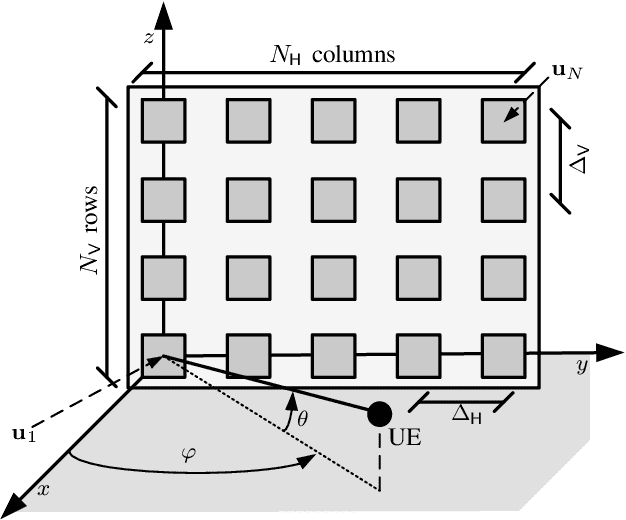
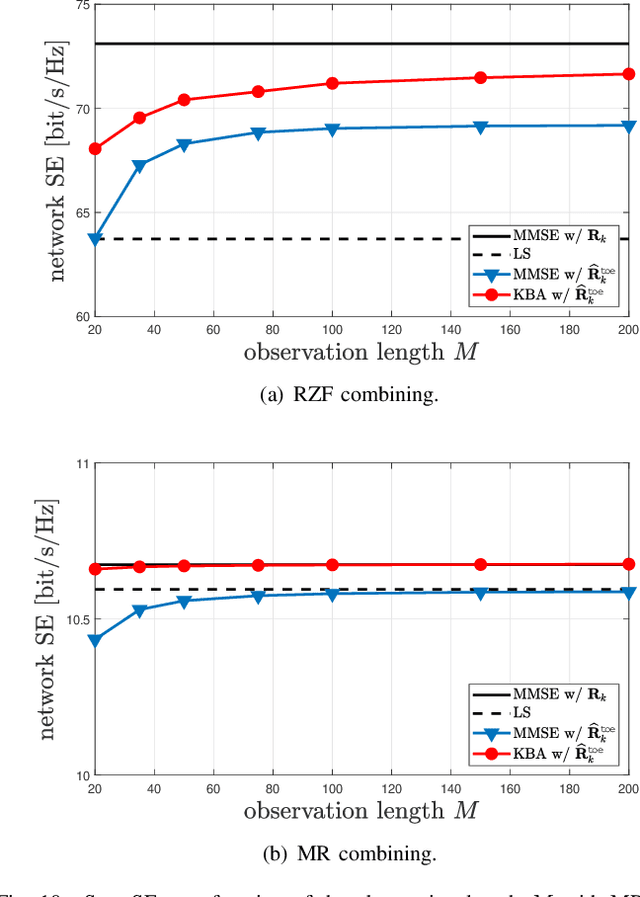
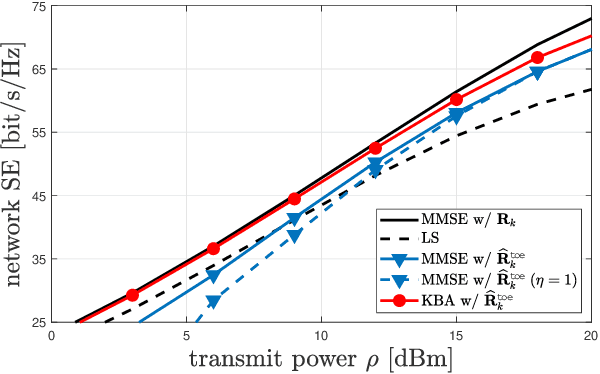
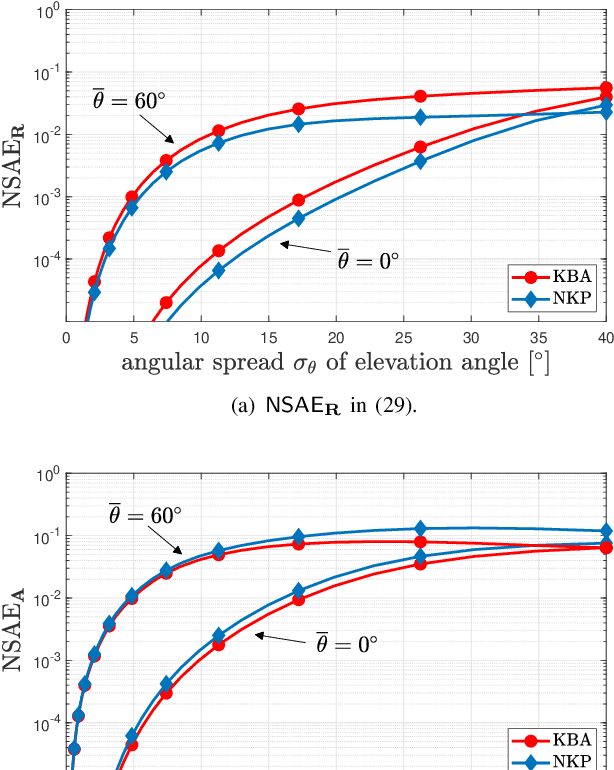
Abstract:Large-scale MIMO systems with a massive number N of individually controlled antennas pose significant challenges for minimum mean square error (MMSE) channel estimation, based on uplink pilots. The major ones arise from the computational complexity, which scales with $N^3$, and from the need for accurate knowledge of the channel statistics. This paper aims to address both challenges by introducing reduced-complexity channel estimation methods that achieve the performance of MMSE in terms of estimation accuracy and uplink spectral efficiency while demonstrating improved robustness in practical scenarios where channel statistics must be estimated. This is achieved by exploiting the inherent structure of the spatial correlation matrix induced by the array geometry. Specifically, we use a Kronecker decomposition for uniform planar arrays and a well-suited circulant approximation for uniform linear arrays. By doing so, a significantly lower computational complexity is achieved, scaling as $N\sqrt{N}$ and $N\log N$ for squared planar arrays and linear arrays, respectively.
DFT-Based Channel Estimation for Holographic MIMO
Jun 08, 2023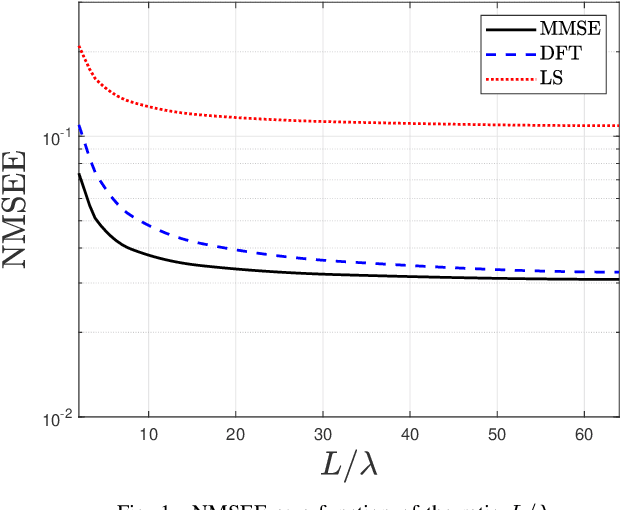
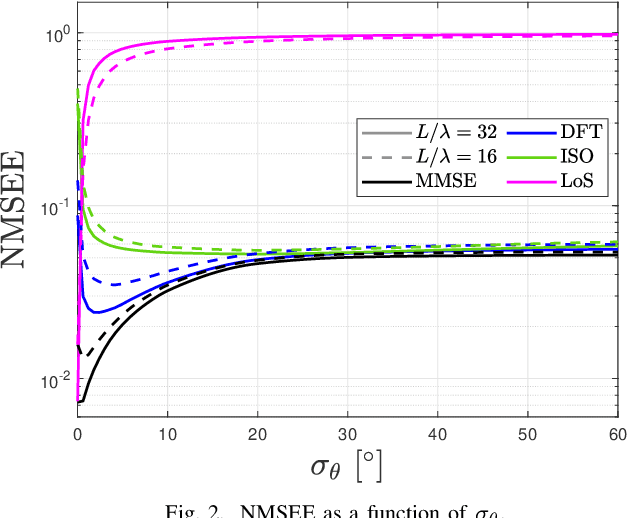
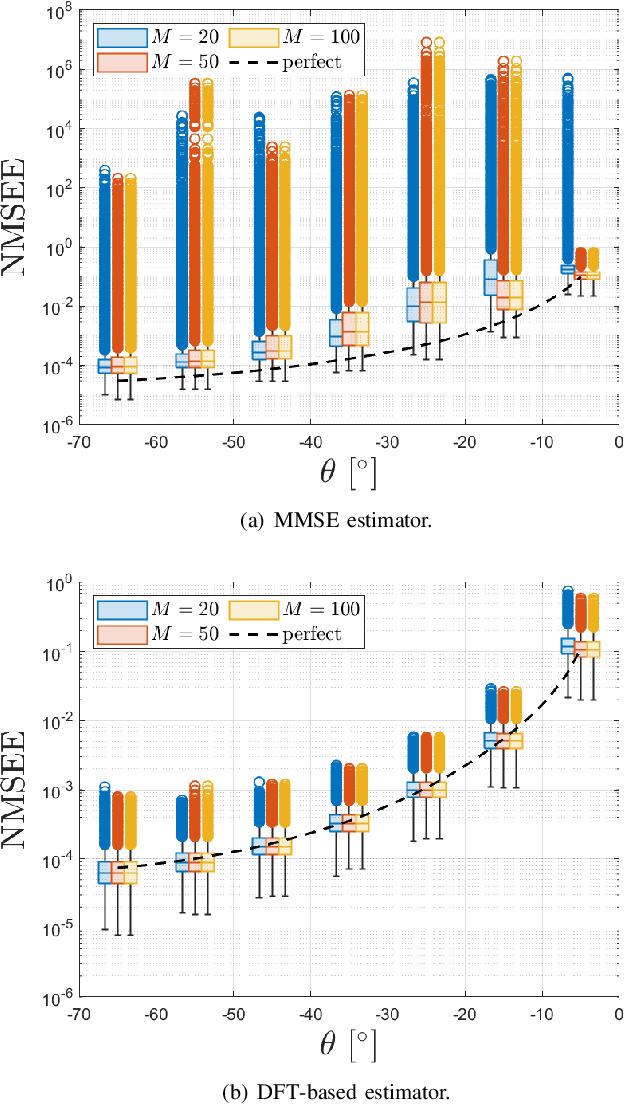
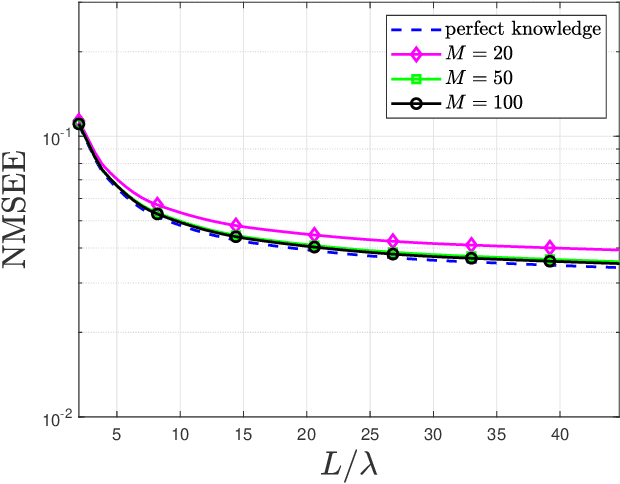
Abstract:Holographic MIMO (hMIMO) systems with a massive number of individually controlled antennas N make minimum mean square error (MMSE) channel estimation particularly challenging, due to its computational complexity that scales as $N^3$ . This paper investigates uniform linear arrays and proposes a low-complexity method based on the discrete Fourier transform (DFT) approximation, which follows from replacing the covariance matrix by a suitable circulant matrix. Numerical results show that, already for arrays with moderate size (in the order of tens of wavelengths), it achieves the same performance of the optimal MMSE, but with a significant lower computational load that scales as $N \log N$. Interestingly, the proposed method provides also increased robustness in case of imperfect knowledge of the covariance matrix.
A Feasibility Study on Opportunistic Rainfall Measurement From Satellite TV Broadcasts
Mar 08, 2023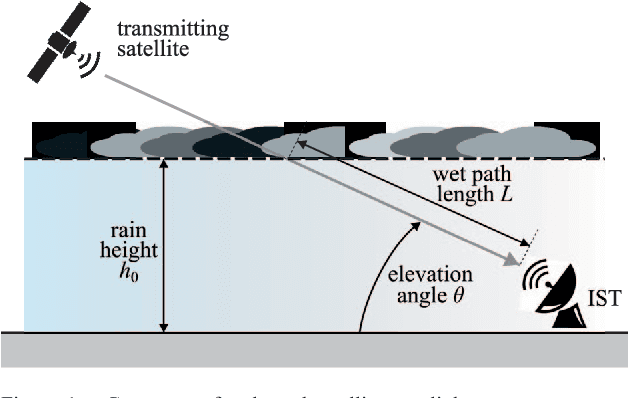
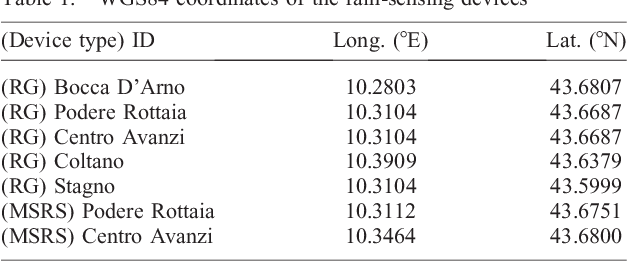

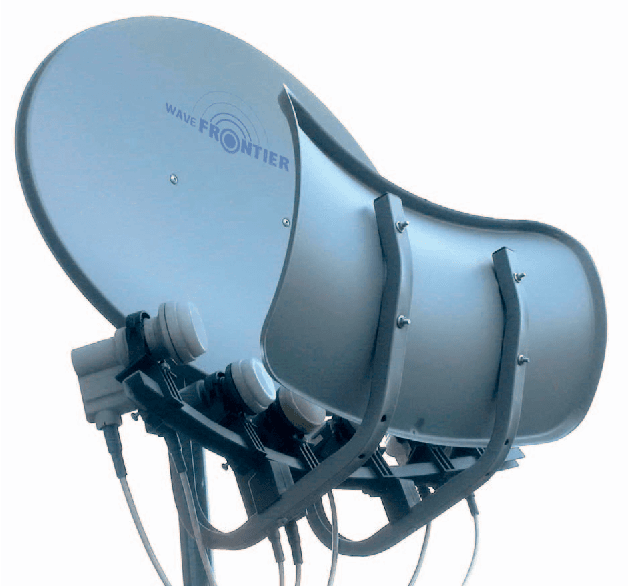
Abstract:Rainfall precipitation maps are usually derived based on the measurements collected by classical weather devices, such as rain gauges and weather stations. This article aims to show the benefits obtained by opportunistic rainfall measurements based on signal strength measurements provided by commercial-grade satellite terminals (e.g., used in TV broadcasting). To assess not only the feasibility of this approach, with significant advantages in terms of capital and operational expenditure, but also improvements in terms of accuracy, we focus on a case study for agricultural applications using a Gaussian-modeled synthetic rain over a specific, real-world test area.
* 5 pages, 7 figures
Spherical Wavefronts Improve MU-MIMO Spectral Efficiency When Using Electrically Large Arrays
Feb 27, 2023



Abstract:Modern MIMO communication systems are almost exclusively designed under the assumption of locally plane wavefronts over antenna arrays. This is known as the far-field approximation and is soundly justified at sub-6-GHz frequencies at most relevant transmission ranges. However, when higher frequencies and shorter transmission ranges are used, the wave curvature over the array is no longer negligible, and arrays operate in the so-called radiative near-field region. This letter aims to show that the classical far-field approximation may significantly underestimate the achievable spectral efficiency of multi-user MIMO communications operating in the 30-GHz bands and above, even at ranges beyond the Fraunhofer distance. For planar arrays with typical sizes, we show that computing combining schemes based on the far-field model significantly reduces the channel gain and spatial multiplexing capability. When the radiative near-field model is used, interference rejection schemes, such as the optimal minimum mean-square-error combiner, appear to be very promising, when combined with electrically large arrays, to meet the stringent requirements of next-generation networks.
 Add to Chrome
Add to Chrome Add to Firefox
Add to Firefox Add to Edge
Add to Edge